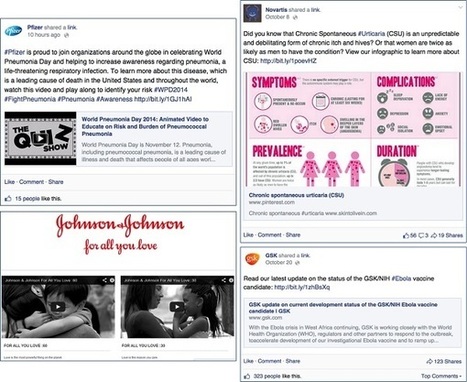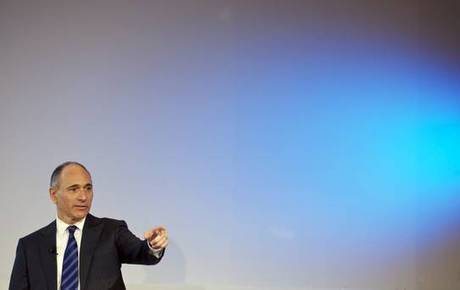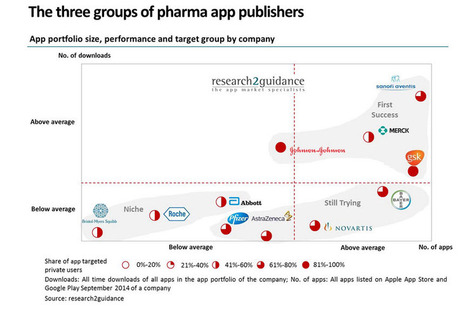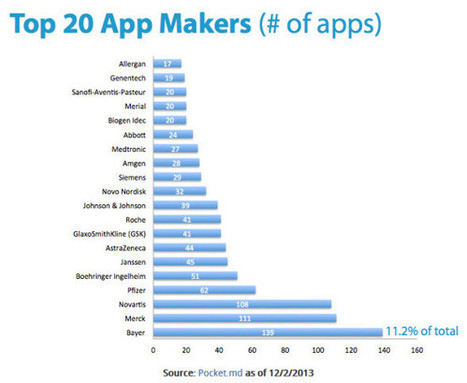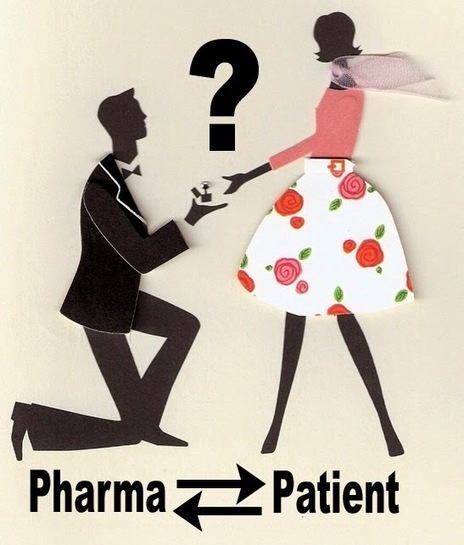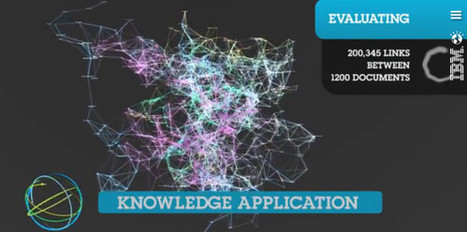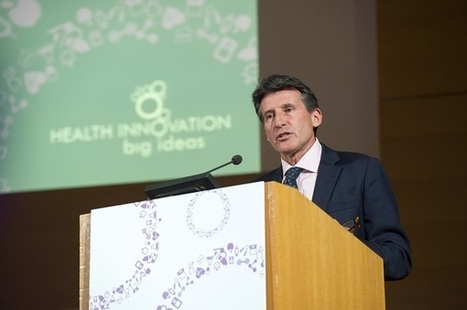 Your new post is loading...
 Your new post is loading...

|
Scooped by
Rémy TESTON
January 28, 2015 5:10 AM
|
Le leader mondial de la pharmacie veut se rapprocher des patients et barrer la route à de nouveaux concurrents comme Google.

|
Rescooped by
Rémy TESTON
from Pharma Marketing
January 16, 2015 4:08 AM
|
Online comments from patients can draw unlawful responses from drug companies
Via COUCH Medcomms

|
Rescooped by
Rémy TESTON
from Social Media and Healthcare
December 18, 2014 7:28 AM
|
Many of these are successful in engaging their audience, considering that there are several likes and shares on each post, as well as some being commented on (especially if they are topical, like Ebola). More robust engagement comes in the form of competitions, such as BI's asthma photography contest. This gets people involved in creating content as well as raising awareness of a therapy area without being promotional and involving product names.
Figure 3. BI's photography competition serves as the cover image and connects an Instagram campaign to their Facebook page. Going one step further, J&J not only asks general questions to the fans of the page, but is also involved in the follow-up discussions. Having personal responses from the company is of high value to the customers, and the dialogue helps build reputation. Note that the key to avoiding regulatory issues is to ask something that is not likely to lead to any mention of products or adverse events.
Figure 4. J&J gets involved in the conversation about Halloween.
Regulations within the industry mean that comments may be removed and most pharmaceutical firms on Facebook have disclaimers on their pages stating that this may be a result of referencing drugs or their effects. This is made most clear by having a different visible tab on the page labelled 'Community Guidelines' or 'Comment Missing?' as done on the pages of J&J, Pfizer, and Novartis. Having an easy-to-understand and friendly section on these terms helps alleviate any customer frustration.
Figure 5. The information page for consumers on the Pfizer page is clear and friendly about the company's comment policy.
The importance of engagement
This is just a small glimpse into how pharmaceutical companies are using Facebook in their messaging to the public. Although the medium may seem constraining, there is still room for creativity in providing compelling information while remaining compliant. The easiest way to promote participation and interaction with the company is through contests, quizzes, conversations about daily life, games and other activities that go beyond the 'like'.
As mentioned earlier, Facebook has allowed users to not only chat with their friends, but also with companies. However, the ultimate goal should be that these companies become friends through open dialogue with their consumers and transparency regarding their regulatory situation, in order to gain the trust and support of the people they serve.
About the author:
Stefan Marcus is research strategist with Creation Healthcare, the engagement strategy consultancy to the global healthcare industry with a special interest in the digital behaviours of health stakeholders.
Via Plus91

|
Rescooped by
Rémy TESTON
from Pharma Hub
November 21, 2014 12:19 PM
|
Talent spotters from Novartis, charged with bringing new ideas into the organisation, are casting their net beyond biotech into the wider pool of wearable, or even edible, technology.
Via Philippe Marchal

|
Rescooped by
Rémy TESTON
from Social Media and Healthcare
November 19, 2014 1:51 AM
|
Social media and platforms have played a major role in this generation to convey relevant information to people around the world. The social media has enable growth in many industries and one being the health care industry. Here are social media strategies for health care industry. Information The general idea why the health care industry uses the social medial is to be able to convey important information to the population and larger audience. This strategy seemed to work perfectly because most of the people now depend on social media for direct and quick information. Image display Health care industry has benefited greatly by being able to pass creative information in form of images and video. The images are the one found in the books where others have not found the opportunity to read. The images also can be of an impending warning, picture message that helps in using some of the medical products. Create Forum To be able to serve people, you should be able to understand what the population think and need every time. The health care industry has managed to create such forums where audiences are able to discuss different topics with ease while exchanging ideas and experiences. Customer care Another health care industry strategy is the use of social media as the center of customer care response. Individuals with health care emergencies are able to contact the health care authority for any assistance. The health care industry will be able to provide vital information and quickly respond to any emergencies reported. Market New Product Counterfeit drugs are being sold to patients without the knowledge of the genuine drugs. Social media has been instrumental in displaying and marketing the original drugs and medicine to audience so that they are able to purchase the right medicines. Again, this platform has enabled the health care industry to provide the precise location where the patients and others can purchase genuine products. The idea is fighting the cunning individuals who intend to make money out of sick patients. Votes and Statistics Social media has been very helpful when it comes to votes and health statistics around the globe. The health care industry use this strategy to be able to gauge and analyse statistic based on the certain region information. The statistics enable help to the healthcare industry by putting measure and health care assistance to places where they seem to be less informed or represented. Educate the audience Social media has been the number one channel in impacting knowledge to the population who are eager to learn more about the health care and health care issues. Now you are able to grasp any information you are seeking without getting of your couch. The information can be summary or in-depth information that will teach you about different aspect of health care industry. Share health care information Social media has enabled health care industry to share any important information such as an outbreak and new facility. Audiences have a chance to share the same information on their social media profile so that other internet users are able to get the information.
Via Plus91

|
Rescooped by
Rémy TESTON
from Digital Marketing
October 31, 2014 6:30 AM
|
A new report looks at big pharma apps downloads and how they can improve mobile health strategy.
Via Matt Coleman

|
Rescooped by
Rémy TESTON
from Social Media and Healthcare
October 19, 2014 3:02 PM
|
Pharma continues to expand its use of social media. As pharma’s understanding of social media has widened, its use of digital channels has broadened. From Facebook to Twitter to Pinterest, these platforms may help companies promote disease awareness, spread their commercial message and connect with online communities. Although each platform may present overlapping capabilities, it is important to remember that Facebook, Twitter and Pinterest are not interchangeable. Each social media scene has its benefits and its limitations. Facebook helps users actively communicate and connect with one another. However, the potential for users to post off-label comments requires active monitoring of company Facebook pages to remain compliant with regulations. Twitter helps companies promote their recent accomplishments and discuss industry trends using links contained in brief tweets — but it may not foster the type of community connection characteristic of Facebook. Pinterest is the equivalent of a “virtual pinboard.” Users create online bulletin boards to which they can post pictures and videos from their own activities or “repinned” from other users’ boards. They can also “like” other users’ pins and generate links to their Pinterest accounts via Facebook and Twitter. Among Facebook, Twitter and Pinterest, platforms, Pinterest has exhibited the most growth across the past year — growing by upwards of 1000% and enjoying over 27.2 million viewers monthly. A separatearticle notes that in February 2012, Pinterest drove more traffic to online publishers than did Twitter —1.05% compared to Twitter’s 0.82%. According to HubSpot, from 2011 to 2012, 80% of pins on Pinterest were “re-pinned” while only 1.4% of tweets became re-tweets. Pinterest has caught the attention of many pharmaceutical companies that are using pinned images and other media to connect with online users. Pinterest helps companies promote disease awareness and serves as a channel to share non-branded messages. At least five pharmaceutical companies — AstraZeneca, Bayer, Johnson & Johnson, Boehringer Ingelheim and Novo Nordisk — have a Pinterest account. Some firms, like Bayer, host a wide variety of active boards on their accounts — each with a number of pins and accompanying descriptions. Other companies center their efforts on therapeutic area- specific boards. Bayer’s Pinterest account includes a “Bayer Advertising” board and a “Science, Education and Advocacy” board. Pinterest also offers companies the opportunity to showcase a less commercialized version of themselves. Bayer’s “Gardening” board, for instance, features tips and tricks which include how to identify common plant diseases. It also provides suggestions for lawn and garden care. As a more indirect marketing tool, Pinterest offers pharma some of the same benefits as Facebook and Twitter. Like Twitter, Pinterest allows for the transfer of information snippets through repeated shares — only in the case of Pinterest, these data accompany media: images or videos. Like Facebook, Pinterest offers pharma the opportunity to develop a sense of community with its online users. For example, Novo Nordisk has boards that use pictures from recent events, including the company’s “World Diabetes Day,” to promote disease events and inspire community involvement. Using the visual appeal of videos and photos, Pinterest helps companies target mobile audiences. However, its relatively new status as a digital channel has not facilitated a large understanding of how to best leverage this platform. Like Facebook and Twitter, Pinterest has its limitations. If a user posts an off-label comment or discussion, companies would have to delete their pin — along with all associated comments — in order to delete the single comment. Current estimates cite that 30% of digital health consumers who use Pinterest encounter health and medical content. Given the growth of Pinterest over the past year, pharma’s use of this social media platform will be exciting to watch as 2013 progresses.
Via Plus91

|
Rescooped by
Rémy TESTON
from Pharma Hub
September 28, 2014 11:27 AM
|
Novartis was announced the first winner of digital pharmaceutical company of the year at last night's PM Society Digital Media Awards in London.
Via Philippe Marchal
The pharmaceutical company grants valuable mentoring and $65,000 in seed money to each of the five companies, and gets up to 10 percent equity in return.
Via TUPINIER Arnaud

|
Rescooped by
Rémy TESTON
from Social Media and Healthcare
August 20, 2014 2:42 AM
|
The availability of information at the click of a mouse has spawned a generation that goes online for explanations for the aches and pains that plague them. Often, these same users use the internet as a tool to locate and contact health professionals that can provide treatment. It is, therefore, essential for Doctors, Hospitals and Clinics to incorporate social media into their business plans. It has been shown that more than 40% of consumers say that the way they deal with their health is directly affected by information obtained on the internet through social media. The Mayo Clinic, a healthcare giant, boasts of more than 800,000 followers on Twitter and half a million “likes” on Facebook. This traffic resulted from the clinic’s 2010 establishment of the “Mayo Clinic Center for Social Media”, a department created to determine how social media could be used for the benefit of the organization. In its Mission Statement the Mayo Clinic states that “individuals have the right and responsibility to advocate for their own health, and it is [The Mayo Clinic’s] responsibility to help them use social media tools to get the best information, connect with providers and with each other, and inspire healthy choices.” Googles reports that with the launch of its social media campaign the Mayo Clinic podcast acquired 76,000 listeners. As with any product being marketed, brand recognition of a healthcare provider is essential. Regardless of the advertising medium – a roadside billboard, an ad on the Yahoo homepage or a TV commercial –distinctive images, an appealing logo and eye catching colors must be employed to promote the product or service. When marketing a service in the healthcare arena an area of import often overlooked is the need to build trust between the patient and the doctor. When those in need of treatment can communicate directly with a doctor through social media, a particular brand can quickly gain the reputation as the ‘go-to’ company in its field. This doctor/patient communication also promotes transparency and ensures trust between doctor and patient. Through social media the Mayo Clinic was able to substantially increase its influence in the field of healthcare. Google further reports that Youtube videos increase traffic to hospital websites by 119% annually. These videos, replete with patient interviews and “feel good” stories, convert traffic to leads because they have a personal touch and a human quality that can only be conveyed through film. Health Watch estimates that penetration of the health industry to mobile devices is as high as 87% and that 19% of smartphone owners have at least one “health app” on their mobile device. Does this mean that health care providers need to develop an app to stay in the game? Not necessarily. What this trend does say, however, is that it is important to increase the direct communication between patient and doctor, building that trust, to effectively market to the health community, and that communication should be directed not only at the computer monitor, but at the mobile device as well.
Via Plus91

|
Scooped by
Rémy TESTON
July 19, 2014 6:04 AM
|
The pharma Singularity is near, and on the basis of the evidence that we have to hand, it appears it will be arriving a good deal sooner than 2045.

|
Scooped by
Rémy TESTON
July 2, 2014 6:09 AM
|
|
Toward the end of 2014 the Blue Latitude team gathered together for breakfast in the boardroom to discuss how pharma marketing will change in the year ahead and what trends will be big in pharma marketing during 2015.
Via Philippe Marchal, Lionel Reichardt / le Pharmageek

|
Rescooped by
Rémy TESTON
from E-patients, e-patients 2.0
January 22, 2015 9:55 AM
|
Sanofi a entamé le recrutement de 700 patients diabétiques pour tester une application leur permettant de calculer en temps réel leur dose...
Via Festival Communication Santé

|
Rescooped by
Rémy TESTON
from Pharma Hub
December 20, 2014 2:14 AM
|
A report published earlier this year illustrated the number of apps pharmaceutical companies produces and the conditions for which they have developed them. The apps are frequently designed to improve health literacy and motivate patients to take their medication to improve adherence, especially around chronic conditions.
Via Philippe Marchal

|
Rescooped by
Rémy TESTON
from Pharma: Trends in e-detailing
November 30, 2014 1:52 AM
|
There are more hands in the circle than HCPs and reps. E-detailing programs connect players with a range of motivations.
Via eMedToday

|
Rescooped by
Rémy TESTON
from Pharma Hub
November 19, 2014 1:52 AM
|
Digital has been cited as a marketing strategy for Pharma. However, a true strategy must embrace the introspective examination of key issues. Who is the customer? What is the role of Digital in overall corporate strategy? How do we shift from the traditional marketing and sales infrastructure, strategy, and metrics to one in which digital technologies are incorporated into all corporate silos?
Via Philippe Marchal

|
Rescooped by
Rémy TESTON
from Digitized Health
November 2, 2014 4:36 AM
|
Click on image for enlarged view.Some industry pundits are incensed that FDA's recent social media guidance prevents pharma from using Twitter to promote its products.
Even PhRMA, the U.S.
Via Emmanuel Capitaine

|
Scooped by
Rémy TESTON
October 27, 2014 6:47 AM
|

|
Scooped by
Rémy TESTON
September 19, 2014 5:06 AM
|
New Manhattan Research Study from Decision Resources Group Helps Marketers Understand How Physicians Are Using Multichannel Information and Services from Pharma

|
Rescooped by
Rémy TESTON
from Digitized Health
August 31, 2014 3:40 AM
|
Johnson & Johnson and Sanofi are using IBM Watson’s computer brain/big data cruncher to support research and development.
Via Emmanuel Capitaine

|
Rescooped by
Rémy TESTON
from Digitized Health
July 27, 2014 7:28 AM
|
The partnership centers around using bioprinted tissue to discover new drugs. The announcement comes ahead of Organovo's commercial launch later this year.
Via Emmanuel Capitaine

|
Rescooped by
Rémy TESTON
from Digital Health
July 5, 2014 6:11 PM
|
After attending OPEN Health's inaugural 'Health Innovation: Big Ideas' event in London, Paul Tunnah outlines some of the concepts that could be game changers for the pharma industry and the broader future of healthcare.
Via Alex Butler
|



 Your new post is loading...
Your new post is loading...





